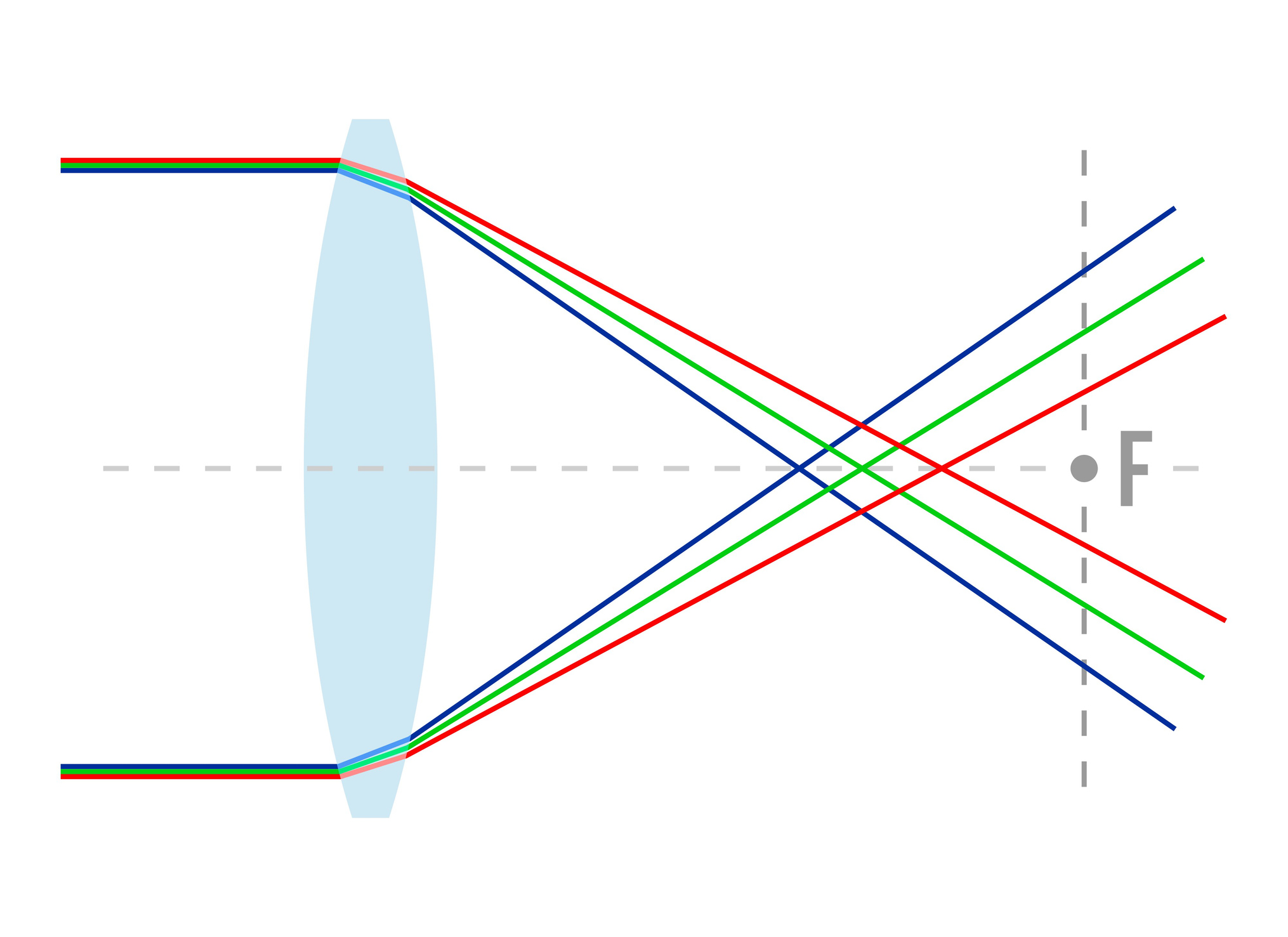Foundation
The light your eye sees is made up of different wavelengths. The different wavelengths of light produce different colors. Because the colors are made by varying wavelengths, we get amazing natural displays such as the rainbow. In a rainbow, the tiny raindrops refract light from the sun slightly less for longer wavelengths such as red, and slightly more for shorter wavelengths such as blue. This separates the wavelengths in the light into bands of color which forms the rainbow.
While this effect is beautiful when viewing a rainbow or looking at light passing through a prisim, it is not a desirable effect when light is passing through a lens and onto your camera’s sensor. Light that passes through the lens near the center of the lens is not bent nearly as much as light that passes through the lens near it’s edges. Because the light that passes through a lens near it’s edges is bent more, it is easier to see the result of shorter wavelengths being bent more than the longer wavelengths near the edges of an image.
Influence from lens quality
The effects of chromatic aberration are more apparent in areas of high contrast that are near the edges of images that are captured with wide angle lenses. Wide angle lenses bend the light much more than telephoto lenses in order to capture a much wider field of view in front of the camera.
This more extreme bending of light is what separates the different wavelengths of light and causes them to strike different areas of your sensor. This is also part of the cause of decreased sharpness near the edges of your images that are captured with wide angle lenses.
As real estate photographers, we almost exclusively use wide angle lenses which means that chromatic aberration is a constant problem for us. One of the best ways to combat chromatic aberration is to use telephoto lenses but for real estate photographers, the essential 17 or 18mm lens is a long way from telephoto.
Another way to combat chromatic aberration is to use high quality glass. The best possible glass in modern lenses use extremely high quality elements that produce very low dispersion. This means that they minimize the separation of the different wavelengths of light. Cheaper “kit lenses” and older lenses use fewer or lower quality low dispersion elements in the makeup of the lens. This is a real life case of getting what you pay for. High quality lenses are very expensive, but they really do produce superior results. The proof is in the image.
Influence from Aperture
By using a smaller aperture, the different wavelengths will focus more closely on the same spot (thus reducing chromatic aberrations and chromatic blurring). This is because of the simple principle of increased depth of field. Combating chromatic aberration is a big part of why it is so important to use smaller aperture settings like f11 and also a tripod in order to hold the camera steady during long exposures necessitated by the smaller aperture.
When you use a high quality lens and a small aperture the effects of chromatic aberration will be minimal. OBEO’s post processing does an amazing job in removing any remaining traces!
About the Author:
A special thanks to Kent Shelton, an OBEO photography partner in Utah.

